Selecting the right materials for outdoor spaces is extremely important, as these surfaces are constantly exposed to various weather conditions such as rain, sunlight, temperature fluctuations, and more. Among all available options, wood stands out as one of the most popular choices for outdoor use—thanks to its unique beauty, high durability, and the warm, inviting atmosphere it brings to any environment.
Certain types of wood, due to their specific properties, are considered the best options for exterior use and are highly sought-after for outdoor projects.
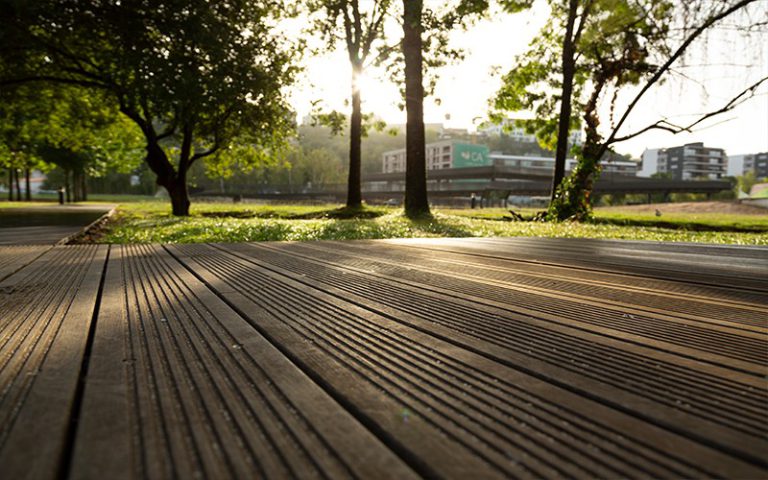
You’ve probably wondered: What is the most suitable wood for outdoor use? When we talk about wood for outdoor structures, we’re referring to types that are naturally resistant and well-suited for exterior environments—making them among the best materials for outdoor settings.
These woods are less affected by moisture, fungi, insects, and even sunlight. That’s why they’re in high demand for use in decking, wall cladding, framing, and even outdoor furniture.
In most cases, consumers also look for additional advantages in wood types—such as resistance to impact, moisture, and pests—when choosing materials for outdoor projects.
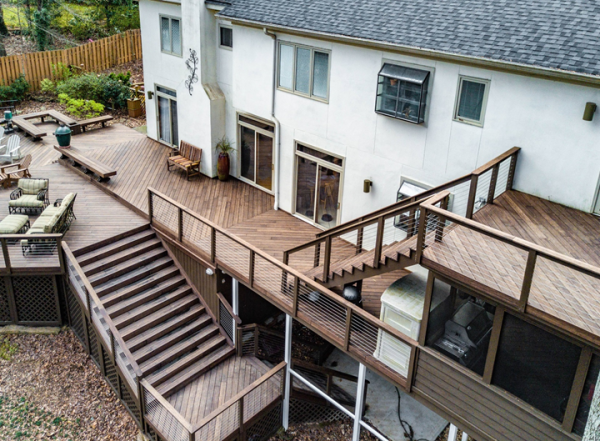
Are you thinking about decorating your terrace or garden with wood and wondering which type is best for outdoor use?
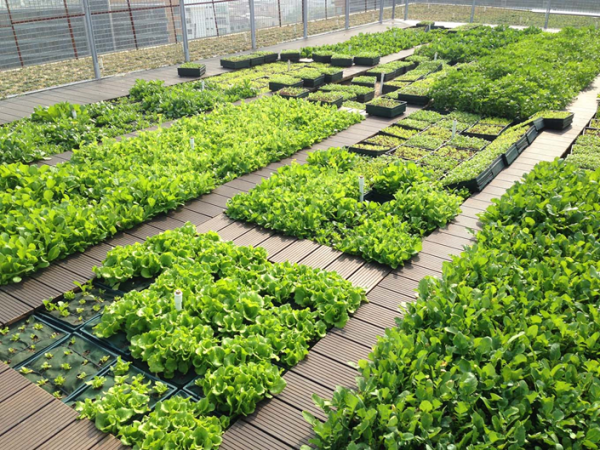
By incorporating wood into your outdoor space, you can bring a natural vibe to your yard, garden, restaurant setting, and more—creating a relaxing and stylish atmosphere. Among thousands of wood types available, it’s crucial to choose species that are resistant to environmental damage to avoid issues like decay, deformation, or discoloration.
In this article, we’ll first introduce the best materials for outdoor spaces, then outline several key steps for selecting the right wood based on its intended use. To learn more about how to maintain and care for outdoor wood, you can also read our article on [wood care tips for outdoor use].
What Are the Key Characteristics of the Best Wood for Outdoor Use?
When selecting the ideal and most suitable wood for exterior facades and outdoor spaces from the wide variety of woods available on the market, there are several key features to consider.
When it comes to the best materials for outdoor use, it’s important to understand that choosing the most beautiful wood for open-air settings is not enough. Instead, factors such as durability and versatility must also be taken into account.
A good outdoor wood is not one that forms a waterproof layer around it—instead, it should allow the wood to breathe while offering greater flexibility, making it much easier to work with and maintain.
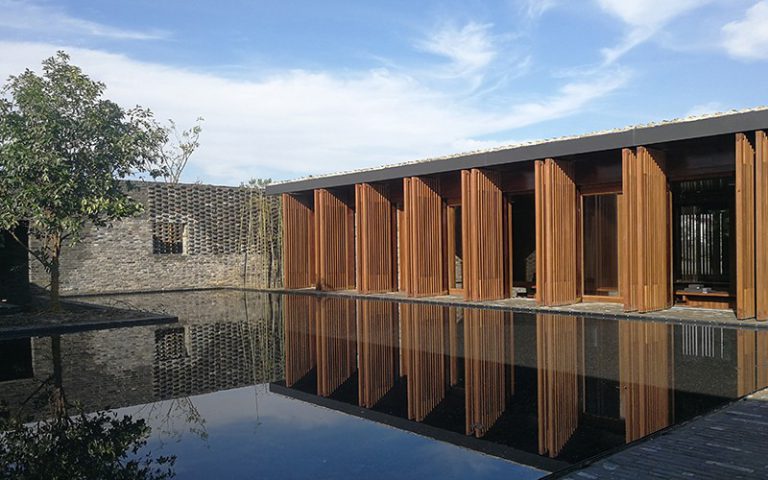
The most suitable and best types of wood for outdoor spaces
Here, we introduce a list of the most durable and highest-quality woods available in the market that you can use when renovating your home’s outdoor space, and we provide a brief explanation about each one.
Teak wood; one of the best types of wood for outdoor spaces
Among the types of outdoor wood, teak is one of the most popular due to its hardness and resistance to outdoor weather conditions.
This wood performs very well in various climates such as cold, heat, and even stable weather.
Teak wood resists insect attacks effectively and only requires cleaning with a damp cloth for maintenance.
To preserve its color, it is sufficient to wash it with teak oil. The color of teak wood creates a striking contrast against the green plants and trees in the environment.
However, its drawback is the price, which is usually higher compared to other outdoor woods.
Teak wood, because of its high density and natural oils, has very high resistance to decay, pests, and moisture. This wood is naturally waterproof and does not require any protective coating.
The golden brown color and beautiful grain of teak wood give a very luxurious and elegant appearance to the surroundings.
This wood can be used for making outdoor flooring, building facades, gazebos, garden furniture, and more.
Bamboo wood
Bamboo wood, due to its unique physical and chemical properties, is one of the most durable woods for exterior cladding and also possesses high aesthetic value, adding beauty and charm to any space.
Moreover, the use of bamboo wood has become a trend in recent years because it aligns with the principles of planetary sustainability.
Although bamboo is not a hardwood, its stability means it does not contract or expand with temperature changes and resists weather conditions such as humidity and heat.
Additionally, with certain protective treatments, the lifespan of this type of wood can be remarkably extended.
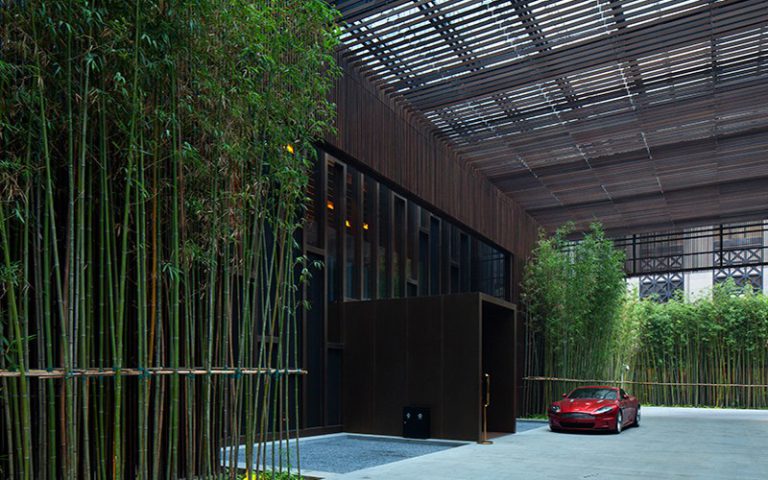
Green pine wood, one of the best materials for outdoor spaces
If you are looking for a more affordable wood option for outdoor spaces, green pine wood might be a good choice. Pine wood offers the best balance between price and quality among the woods favored by most consumers.
This wood also has characteristics that allow it to create a natural atmosphere incomparable to other outdoor environments.
Green pine wood, however, does not have strong resistance against fungal and insect attacks.
But with proper antifungal and waterproof treatments, this wood can withstand outdoor durability quite well. Green pine wood is considered one of the best woods for outdoor use.
Tropical woods
Tropical woods grow in environments with very high humidity, heavy rainfall, and oppressive heat.
Therefore, these woods are naturally prepared to withstand outdoor harsh conditions and are ideal choices for terraces.
One of the most commonly used tropical woods is “Ipe,” which, although not cheap, only needs to be oiled with a special natural oil twice a year.
Iroko wood, also known as African teak
Iroko wood, also known as African teak, is native to Africa and has a yellowish color that quickly darkens to a deep brown.
Iroko wood is used for a variety of purposes, especially for building decks, tables, boats, and even musical instruments.
Additionally, African teak wood is resistant to insects and fungi.
Cumaru wood, also known as Brazilian teak, is one of the most suitable woods for outdoor spaces.
Cumaru wood, known as “Brazilian teak,” originates from South America and starts with a color ranging between yellow and red, gradually developing a silvery tone. This wood has excellent properties for boat building, and its behavior against fire is truly exceptional, resembling that of steel or concrete.
Like the other types of wood mentioned earlier, this wood is highly resistant to insects and moisture, which is why it is often used for outdoor flooring as well.
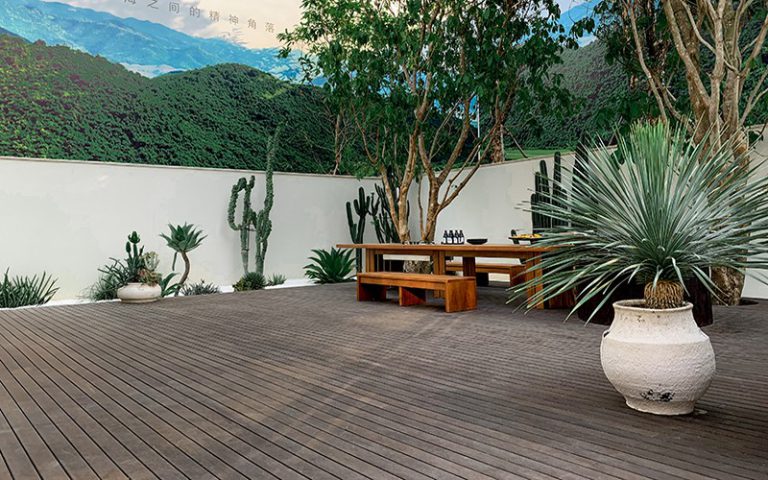
Ipe wood, native to South America
Ipe wood is native to South America and has a dark olive brown color that can darken further. Due to its high resistance and durability in humid environments and against insects, it is in demand for outdoor flooring.
Additionally, because of its high density, Ipe wood performs well against fire.
Working with this type of wood is not easy, as it causes significant wear on tools and machinery due to its extreme hardness and density.
Cedar wood is one of the best materials for outdoor spaces.
Cedar wood is a relatively lightweight wood suitable for cladding and outdoor spaces. It has a reddish hue and is lighter in color compared to the previously mentioned woods.
What makes cedar wood suitable for outdoor use and resistant to moisture and insects is its resin content.
Thermowood
Thermowood, also known as heat-treated wood, is a type of processed wood whose resistance and stability against weather conditions significantly increase through exposure to high heat and pressure.
This wood is resistant to decay, pests, fire, and color changes caused by UV radiation, and can be used for outdoor flooring, building facades, gazebos, garden furniture, and more.
With its natural and beautiful appearance, thermowood creates a warm and inviting atmosphere in outdoor spaces.
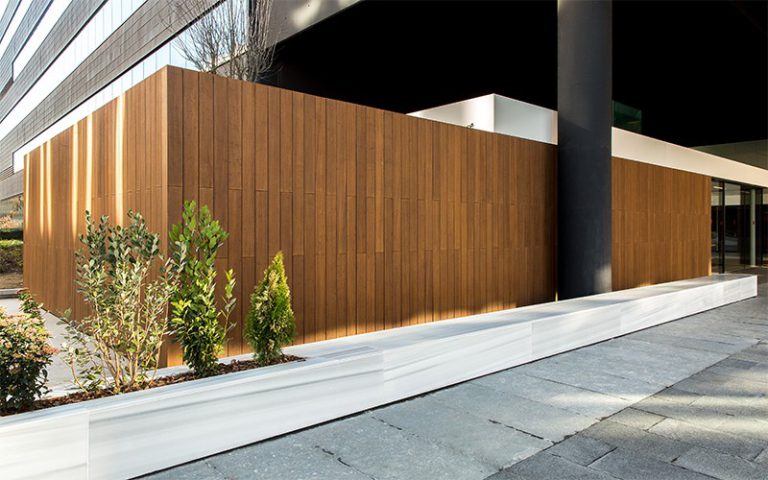
What qualities should the wood you choose for outdoor spaces have?
In general, when choosing suitable wood for outdoor spaces, various characteristics must be considered.
Below is a detailed explanation of the necessary features for wood appropriate for outdoor use:
– Water Resistance:
The wood should be resistant to water because it will be exposed to rain, humidity, and sea salt. Woods like cedar, teak, and pine have high water resistance.
– Resistance to Insects and Decay:
Suitable outdoor wood must have strong resistance against insects and decay. Woods such as teak, pine, and spruce are very durable in this regard.
– Load-Bearing Capacity:
Outdoor wood should have good weight-bearing capacity since it is often used in flooring, railings, and bridges. Spruce, cedar, and oak are appropriate choices for this.
– Resistance to Heat and Cold:
The wood should withstand both heat and cold to perform well in various weather conditions. Teak, spruce, and cedar are highly resistant to temperature changes.
– Attractive Appearance:
Woods suitable for outdoor use should have a beautiful and appealing look. Teak, spruce, cedar, and oak are excellent in this aspect.
– Corrosion Resistance:
Outdoor wood should resist corrosion to prevent premature fatigue and damage. Cedar, spruce, and teak are very resistant in this regard.
Considering these characteristics, the best wood for outdoor spaces is one that naturally possesses these qualities while also being cost-effective and suitable for your specific project.
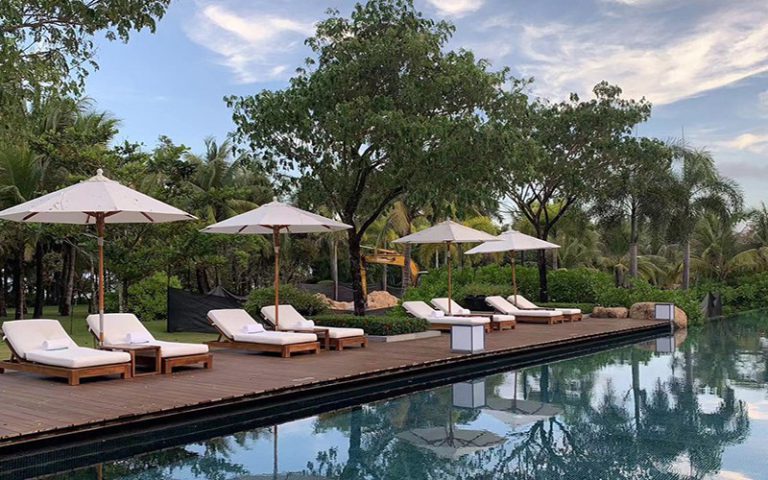
Dasso woods
Dasso is one of the most prominent manufacturers of the best materials for outdoor spaces, and HIB is the official distributor of its products in Gcc. Dasso’s products encompass all the qualities of a flawless outdoor material. Additionally, the variety in sizes and shapes of the wood is designed to be suitable for use in facades, flooring, and ceilings of buildings and outdoor areas.
The images used in this article showcase examples of Dasso wood installations in both large and small projects around the world.
In the following, we will carefully examine the special features of these products.
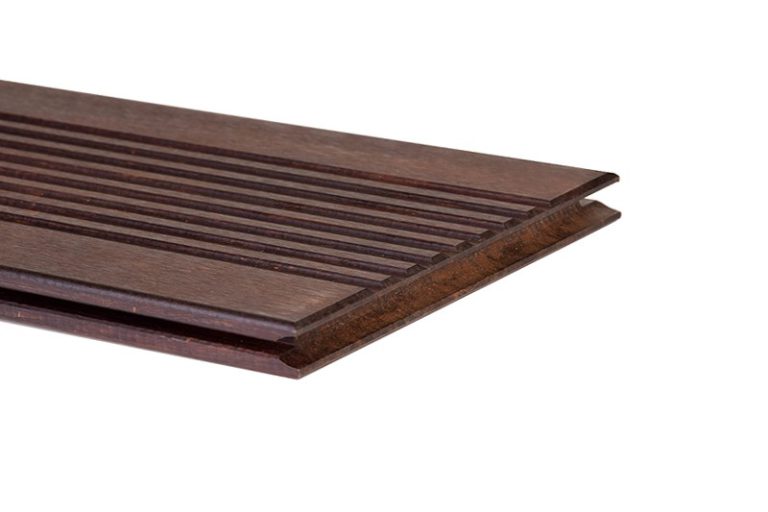
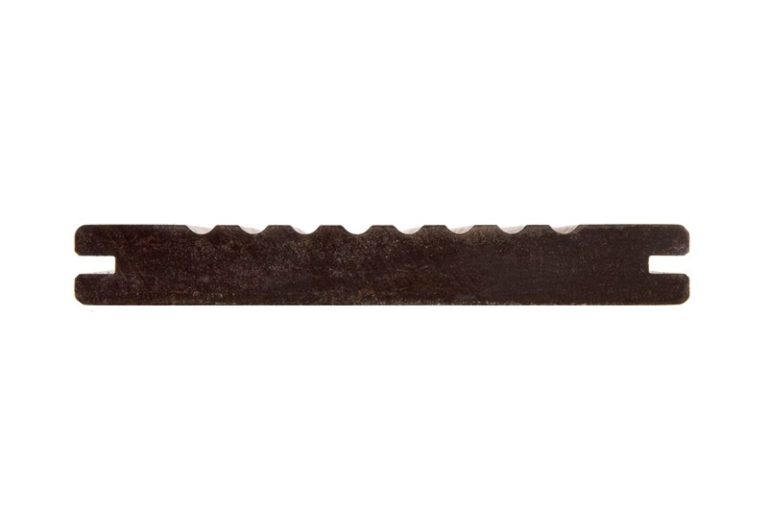
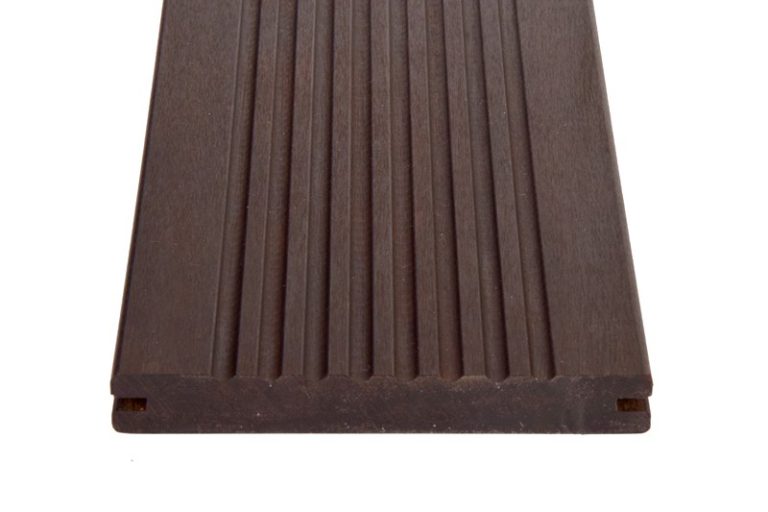
These woods feature easy installation with a click system.
The surface of the product can optionally be grooved or smooth.
Dasso woods are also impact-resistant, scratch-resistant, and slow-burning.
Moreover, all of these products are antibacterial, antifungal, insect-resistant, and environmentally friendly.
The combination of each of these features makes these products truly unique.
Dasso products come with a 25-year warranty from the company.
Environment Friendly Bamboo ready for harvest after 4-6 years [compared to up to 100years for hardwood species] – no deforestation
HIB Company, as a leading provider of the world’s latest materials, supplies various types of Dasso woods and the best outdoor materials for use in facades, ceilings, and flooring.
HIB’s professional installation team is also ready to expertly install and implement these materials.